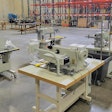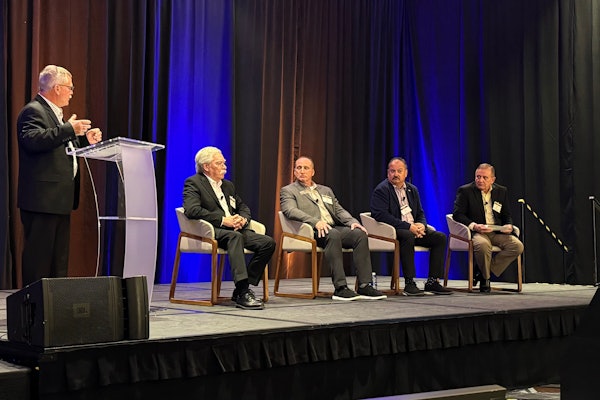Amazon and e-commerce, in general, were addressed by industry experts during a session at the Heavy Duty Aftermarket Dialogue (HDAD) Monday in Las Vegas.
Tackling the role e-commerce is and will play during “Changing Distribution Model — The Growing and Emerging Players” moderated by Truck Parts & Service Editor-in-Chief Lucas Deal, were Mike Harris, senior vice president of sales and branch operations, Fleet Pride; Stefan Kurschner, senior vice president, Daimler Trucks North America; Carl Mesker, vice president of sales Americas, SAF-Holland; and Walt Sherbourne, vice president, marketing, Dayton Parts.
The aftermarket’s ability to compete with Amazon has been a hot topic in the industry and panel members shared their thoughts on the online giant.
“[Amazon] has a different value proposition than the distribution base we sell to today. I don’t care about Amazon because I know [products] aren’t coming from Amazon. … It’s me fulfilling an order or my distributor fulfilling it; it’s still not coming directly from Amazon,” Sherbourne said. “Let’s not get hung up on Amazon until it actually stocks parts in its warehouse; I think that’s when we need to be concerned.”
Sherbourne added that Amazon doesn’t have that expertise at the parts counter, which is the value proposition the customer gets from the aftermarket community — the customer knowing he is getting the right part.
“Amazon is an interesting company and I think there are things we can learn about it. It has built a tremendous digital platform,” Kurschner said. “But it goes back to fact that the customer makes the ultimate choice where and how to order. If your customer decides to go somewhere else, you know you’re not fulfilling a need.”
Regarding e-commerce in general, Mesker acknowledged that there’s a percentage of people who want to buy online and more are forecasted to buy online in the future.
“As a supplier, we are reinventing our e-commerce site and what we’re learning is what our distributors are going to want when they launch theirs,” Mesker said. For example, SAF-Holland will need to adapt to industry standards to economically meet the needs of many different vendors.
“We’re learning what our distributors are going to need from us and set up a system that not only works for us but works for our distributors,” he said.
Harris added, “Our supplier partners … have certainly embraced the standards [Mesker] is referencing. At the end of the day I think it will benefit the entire value chain and make it easier for a customer to identify what they need quicker and [improve] vehicle uptime to keep that customer’s truck on the road.”
Kurschner said the digital platform is a way of doing business as well as another way to connect with customers. “Right now [the industry is] in a phase where we are figuring out what a digital platform has to look like. There is a certain amount of standardization that needs to happen. But it’s definitely a way of interacting with our customers and a way to make the transaction faster.”
However, Kurschner added, there will be a substantial portion of customers that will not interact on the digital platform.











